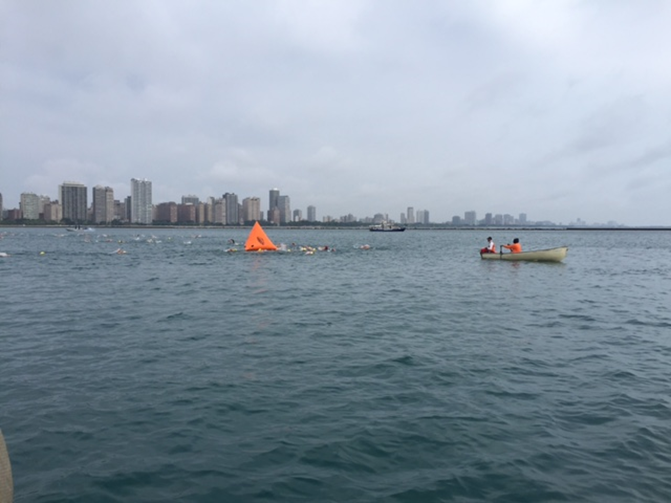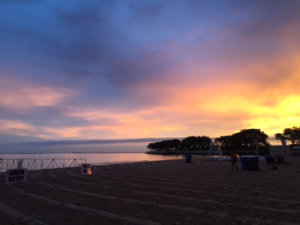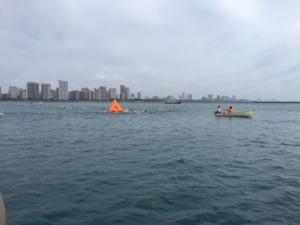For swimmers who practice and compete in pools, getting away from the black line on the bottom of the pool to do some open water swimming might never have crossed their minds.
Over the past several decades, open water swimming (the practice of swimming in oceans, lakes and/or rivers) has gained popularity. The practice officially began in 1810 when Lord Byron swam several miles from the Dardanelles to Asia. Then in 1896, open water swimming made its first appearance in the modern Olympic Games (in Athens) with a 1500m swim. Since 2008, a 10k open water swim has been an officially sanctioned Olympic event.
Embraced on a global level, open water-swimming events now take place everywhere from Istanbul to Copenhagen to Lake Zurich. Competition is fierce and swimmers brave a wide range of conditions to compete in events and claim bragging rights. Event distances range from 2.5K to the staggering 193K Eight for the Bridges Hudson River Swim. These open water swimming races require a great deal of training and planning. This is to take in to account for a wide range of possibilities.
Big Shoulders Open Water Swimming Classic
In Chicago, the Big Shoulders Open Water Classic has become a beloved tradition on the first Saturday after Labor Day. Founded in 1991 by the late Bill Mulliken, Olympic Gold Medal winner (’60 Rome breaststroke) as a fundraiser for the University of Illinois at Chicago swim team, Big Shoulders has grown to be one of the premier open-water races in the United States. The race is limited to 1200 registrants 800 for the 5K and 400 for the 2.5K. Every March registration closes earlier as swimmers log on and sign up to swim. In 2017 registration closed in just four hours.
Most open water swimmers choose to swim freestyle for these events. This allows them to sight the buoys or triangulate. This means they are looking for two aligned, easily visible objects behind the destination. Very helpful when the race is a straight swim between start and end. The Big Shoulders swim is set up as a 2.5K course. Its marked by four large buoys so that 5K swimmers take two trips around the course. The swimmers are assigned a swim cap colour based on their entry times and are started in waves with the Elite 5K swimmers taking off at 8:00 am and ascending age groups following every four minutes until 8:28 am when the 46 & Over 2.5K swimmers start.
Open water swimming is tough
It’s a gruelling course and it can be more than some swimmers can handle. Part of the challenge is the water. Lake Michigan temperatures can fluctuate widely and rapidly based on the changes in weather and wind. The rules for Big Shoulders state that if the water temperature drops to 60 degrees or below, all swimmers are required to wear wetsuits. However, as in competitive pool swimming, wearing a wetsuit disqualifies swimmers from posting any official open water swim times. More often than not, the water is warm enough for swimmers to skip the wetsuit. Occasionally swimmers will still find the water too cold and be unable to finish the race.
This is when the race monitors and lifeguards are essential. Lifeguards are positioned throughout various points on the course. They are in rowboats are there to help swimmers stay on course. Plus to pull out anyone who can’t make it to the finish line. The race monitors circle the course in motorized boats ensuring that all swimmers stay outside the buoys. They too also pick up swimmers that can’t finish and depositing them near the beach.
At the end of the race, organizers award medals to the fastest swimmers in each group and host a huge barbeque on Ohio Beach!



